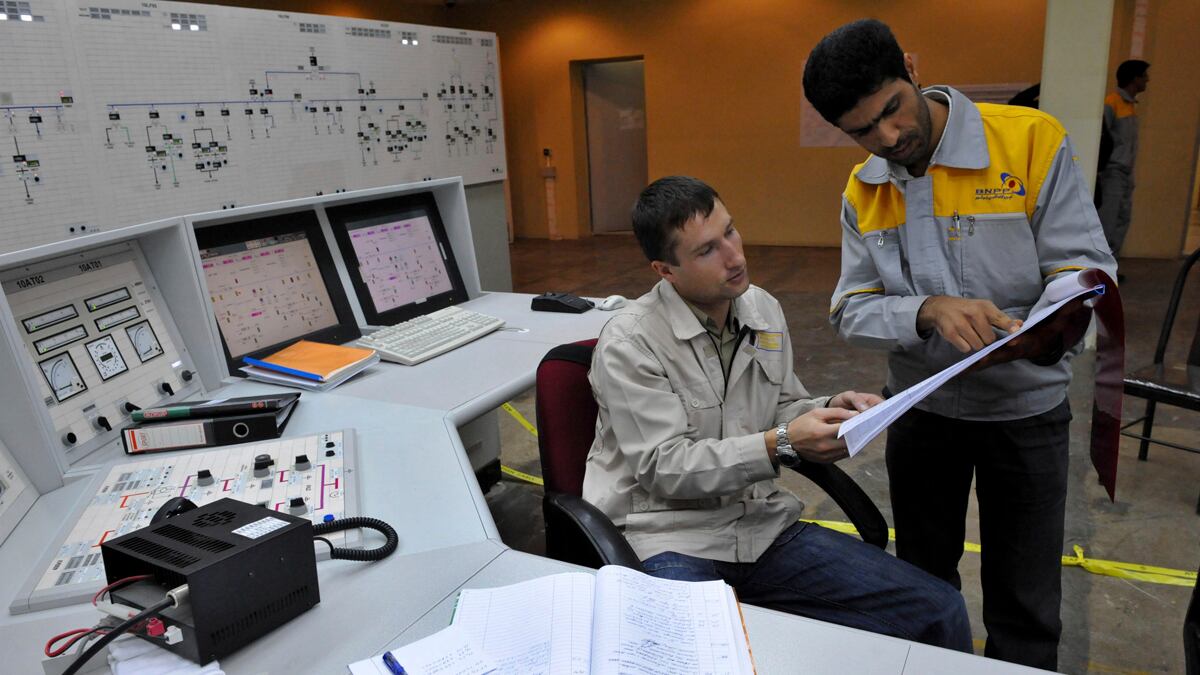The chief of Iran’s nuclear program says the power lines to his nuclear facilities were sabotaged. U.S. Special Forces have trained for operations inside Iran for years. Do these latest disclosures suggest they are already on the ground?
On Monday, Fereydoun Abbasi, Iran’s vice president and the chief of its nuclear-energy agency, disclosed that power lines between the holy city of Qom and the underground Fordow nuclear centrifuge facility were blown up with explosives on Aug. 17. He also said the power lines leading to Iran’s Natanz facilities were blown up as well. On the day after the power was cut off at Fordow, an inspector from the International Atomic Energy Agency (IAEA) asked to visit the facility.
“It should be recalled that power cut off is one of the ways to break down centrifuge machines,” Abbasi said, according to a copy of his prepared remarks to the IAEA on Monday. “Then during the early hours of next morning an agency inspector requested to conduct an unannounced inspection. Does this visit have any connection to that detonation?”
ADVERTISEMENT
In recent years, the West’s stealth war on Iran’s nuclear program has been waged through sabotage, industrial explosions, cyberviruses, and targeted killings. But until recently elements of the country’s civilian infrastructure were off limits in this not-so-secret shadow war.
The disclosure is significant. To start, it is the first piece of evidence to suggest opponents of the Iranian program are targeting the country’s electrical grid and doing so on the ground. The U.S. military has studied Iran’s infrastructure closely. In 2009, a research lab attached to the U.S. joint staff and combatant commands known as the Joint Warfare Analysis Center discovered a weakness in Iran’s electrical grids that at the time would make it vulnerable to a cyberattack.
The attack described by Abbasi suggests, however, a physical explosion as opposed to a cyberattack. He specifically said the power lines from Qom to the Shahid Ali Mohammadi complex at Fordow “were cut using explosives.” In this case, special-operations forces on the ground in Iran would carry out such an attack, as opposed to cyberwarriors half a world away.

A retired U.S. intelligence officer who still works as a contractor with the U.S. military on operations with regard to Iran told The Daily Beast that U.S. Special Operations Forces have trained for sabotage missions inside Iran for years. “From the first reports, this attack looks like something from our guys,” this source said. This former official also said U.S. Special Operations Forces conducted a series of targeted attacks on Iran’s Islamic Revolutionary Guard Corps in late 2011 as the U.S. military was exiting Iraq. That stealth offensive is widely credited with stopping Iran from attacking U.S. forces as they left Iraq.
If the United States conducted the sabotage of Iran’s power lines, it may help ease concerns from Israel’s Prime Minister Benjamin Netanyahu. Last week a private disagreement between Netanyahu and President Obama went public when the Israeli leader chastised Western countries for failing to set red lines for Iran, beyond which there would be a military strike. While at times Israel and the United States have disagreed on Iran policy, the intelligence services of the two countries continue to cooperate on efforts to sabotage the program.
Patrick Clawson, the director of research for the Washington Institute for Near East Policy, said, “Covert American operations against the Iranian program is a good way to persuade the Israelis that the United States will back up its words with deeds.” Spokesmen for the National Security Council, the CIA, and the IAEA all declined to comment on Abbasi’s disclosure.
Overall the shadow war against Iran’s nuclear program is one reason some top national-security officials in Israel have said they have more time. Meir Dagan, the chief of Israel’s Mossad between 2002 and 2010, said in an interview aired by CBS’s 60 Minutes in March that bombing Iran would be the “stupidest idea” he’d ever heard. Dagan said other measures conducted by Israel and the United States, which he did not elaborate on, had done enough to delay Iran’s quest for a nuclear weapon.
But it’s unclear whether the sabotage by Western spies is still working. Abbasi in his speech, for example, said Iran was now taking countermeasures to protect its scientists. He said Iran’s nuclear facilities have become better at spotting cyberattacks.
Whether a cutoff in the power supply is successful depends on whether the nuclear facility has a backup power supply. Robert Avagyan, a research analyst at the Institute for Science and International Security, said, “If a cutoff of power is aimed at the centrifuges, it would be aimed at slowing down the centrifuge. Sudden changes of spinning speed can cause severe damage to the centrifuge. But this kind of attack would not be effective if there was a backup power source that prevents such a power cutoff.”
The latest IAEA reports paints a mixed picture on the success of Iran’s nuclear program. On the one hand, Iran has yet to install the advanced centrifuges it has been developing for at least 10 years. The latest report says the centrifuges it has installed at the Fordow facility are still based on the 1970s-era model first stolen by Pakistani nuclear scientist, A.Q. Khan.
At least in his presentation to the IAEA, Abbasi said Iran’s program was resilient in the face of sabotage. He said, “Plotters of attack against Iran’s nuclear facilities have realized, through the IAEA published reports, that they have not gained any success in this regard.”





